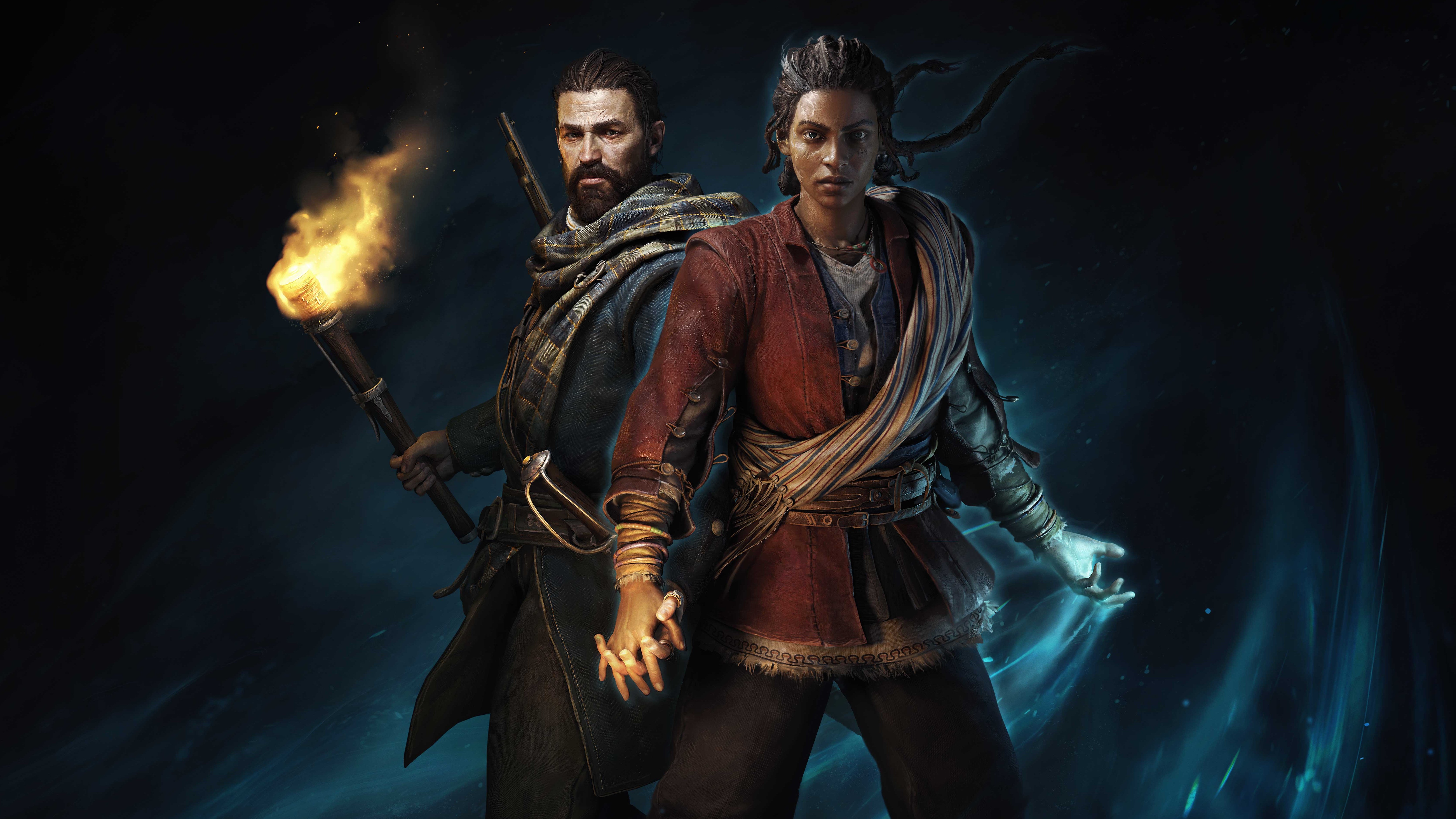
What is it? A story-focused action RPG where you play as a ghost-hunter and his spectral partner.
Release date February 13, 2024
Expect to pay $50/£45
Developer DON'T NOD
Publisher Focus Entertainment
Reviewed on GeForce RTX 2060, Intel Core i7-10750H, 16GB RAM
Steam Deck TBA
Link Official site
Banishers imagines a world where the restless dead are a common occurrence, be they wisps, giant monsters or chatty ghosts bearing unfinished business. Much as you’d call a plumber to fix a leaky pipe, here you send for a Banisher to remove a troublesome spirit, either by hacking it to bits or peacefully ascending it to another plane of existence. They’re basically Witchers, but without the genetic experiments that leave them emotionally bereft.
If anything, Banishers is a game that goes the other way, practically wallowing in the full emotional palette as you aid a landscape that has been torn apart by trauma. There’s the trauma of the resident ghosts – many of which are literal manifestations of anger or sorrow – but also the trauma of the two main characters, Antea Duarte and Red mac Raith, who have recently been separated (in a manner of speaking) by Antea’s death.
That death occurs shortly after the couple arrive at New Eden, a colony in 17th century North America that has been beset by a terrible curse. A permanent winter has taken hold of the place, and the veil between life and death is wafer-thin, resulting in intrusions by violent spectres and the sudden death of their old friend, Charles Davenport. He has been killed by a powerful spirit that resides at the town meetinghouse, and so it’s there that the Banishers head to, well, banish it.
Alas, it doesn’t go to plan and poor Antea is killed by the vengeful spirit, leaving Red alone on the outskirts of town, where he comes to after being heaved into the sea. So begins the long journey to both find the means to destroy the spirit, and return to town to reclaim Antea’s body, which Red will need before he can send her spirit onwards.
Of course, in such a world, Antea’s death hardly stops her making an appearance, and she soon returns as an active partner in Red’s personal mission. While Red can touch things and talk to living people, Antea sees into the realm of the dead, where she can use her ghostly powers to destroy obstacles and unveil hidden items. You’ll switch between them at the touch of a button, as you make use of their complimentary abilities to investigate hauntings and pummel ghosts into the afterlife.
Love is...
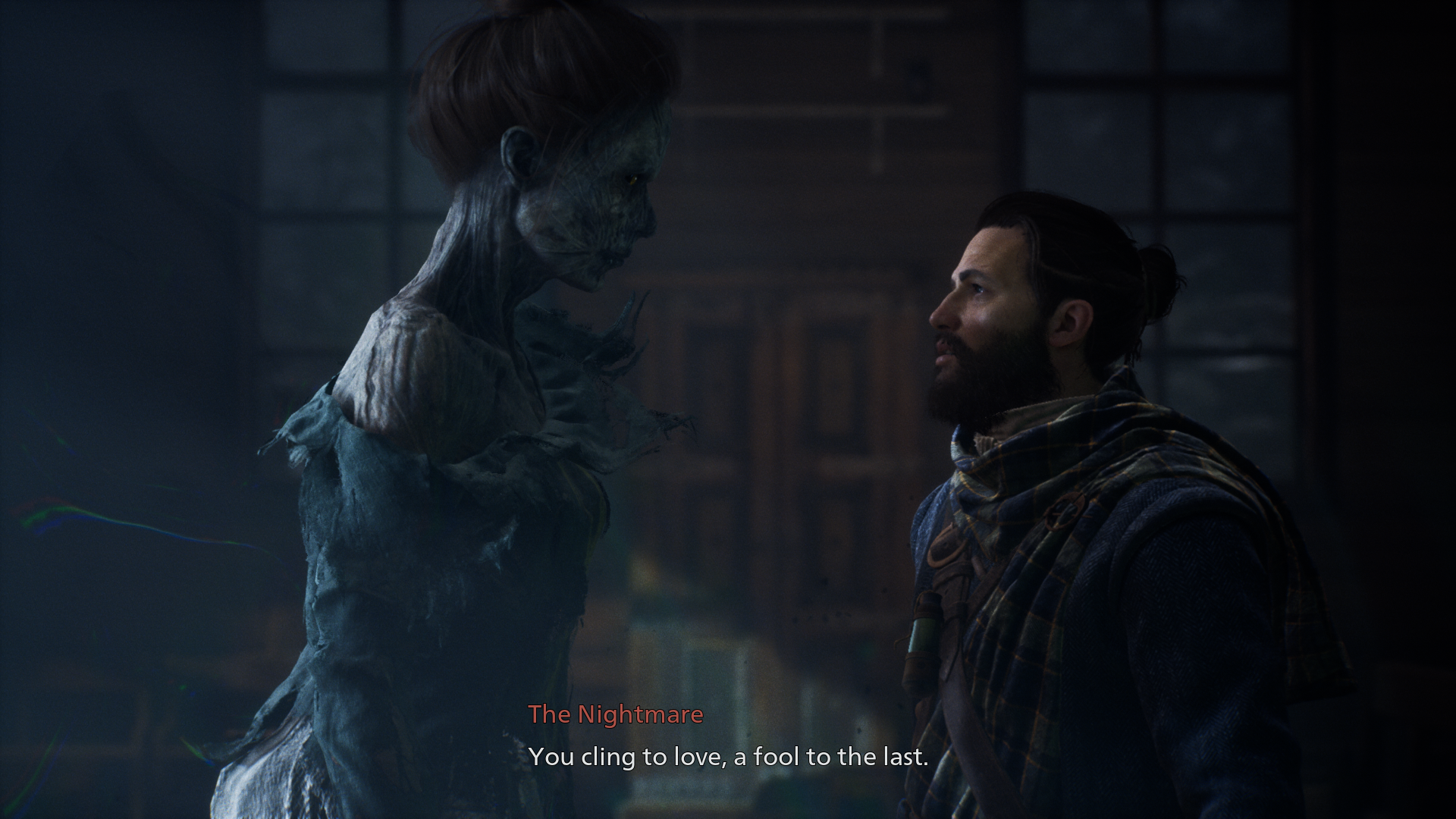
While we often have party members in games like Mass Effect, there aren’t many RPGs that feature two protagonists – and surely no others where they’re in a relationship from the onset. It’s refreshing to see the bickering, flirting and reminiscing of a mature couple, and to have that dynamic be present for the entire game.
I’m really quite fond of Antea and Red, now that I’ve seen their story through to one of the multiple endings, although for a long time they just felt too perfect to be relatable. It was only later on – when the easy back-and-forth that comprises their banter began to slip away, allowing deeper conversations to emerge – that I finally became attached to the couple.
I should note that I’ve only seen one of the two major endings teased at the start of the game: do you give Antea her ascent, and usher her into the afterlife, or use black magic to return her spirit to her body? Those aren’t spoilers, by the way, but the major goals you spend the game working towards, as you either peacefully help New Eden’s residents or (gulp) kill them to fuel Antea’s return.
These are the decisions you’ll have to make at the end of most main quests, and every side haunting, as you choose to murder the person haunted by a ghost, or leave ‘em be, as you send the spook on their merry way. I was tempted to take the evil path, because the game seemed to be pushing me down it, while Antea’s growth as a spirit makes much more sense in that context, but in the end I stubbornly played this as my usual saint. But whichever path you choose, the game recommends that you stick to it, as you’ll need to murder a boatload of settlers to successfully power the resurrection spell, and if you flip-flop there might not be enough.
Ghost town
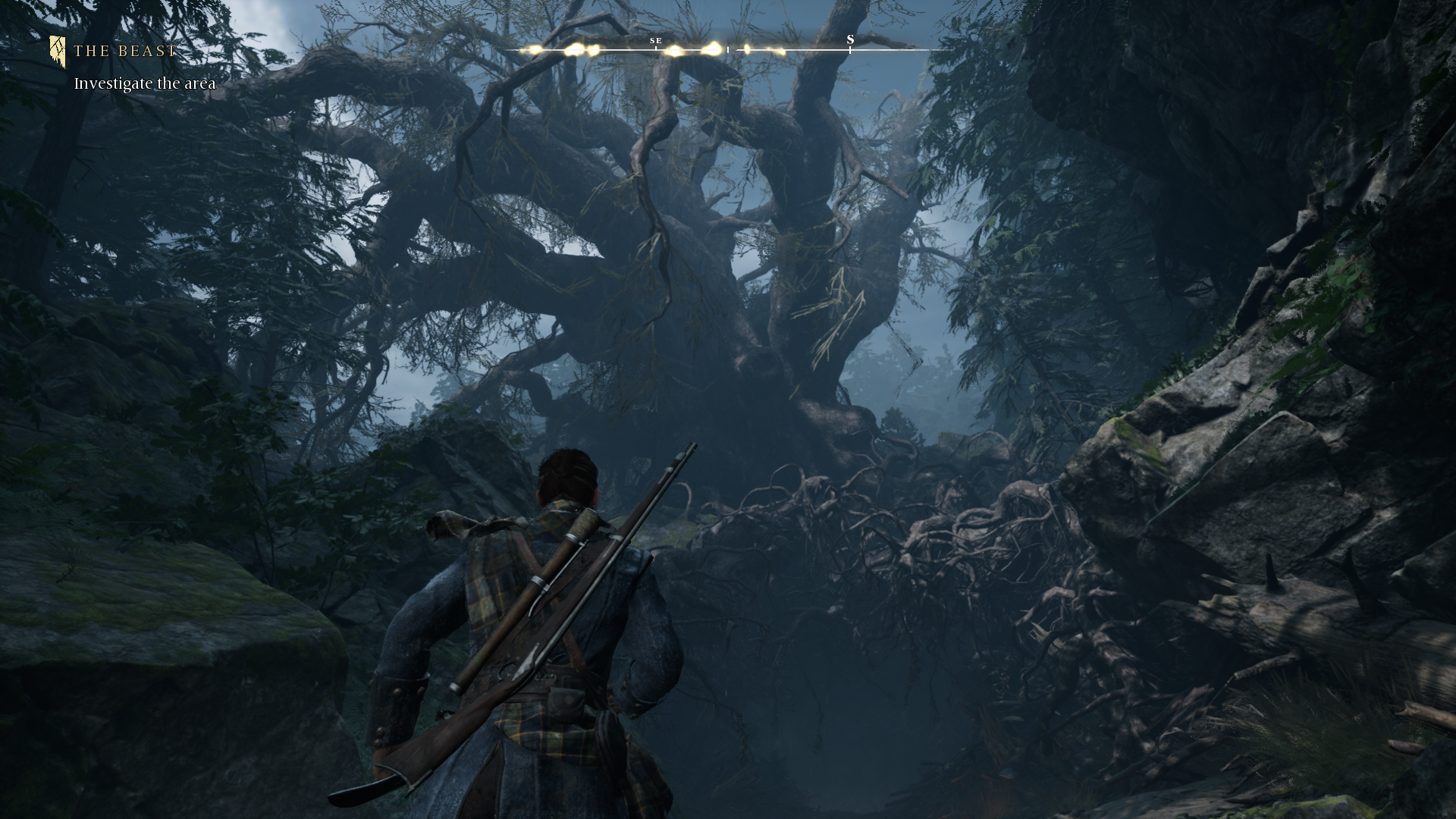
Banishers’ story has a very different flavour than most RPGs, in that you’re striving to save a region, a small cast of people, and your beloved rather than the entire world. I mean this as a compliment (well, mostly), but it feels like a Witcher 3 quest blown up into a full-size game, really giving you the chance to get to know one town and its colourful inhabitants.
Despite the supernatural overtones, Banishers is very much set in our world, at a time when witch hunts (if not witches) were very real. A witch hunt is central to the plot, with most of the major characters involved in some way, so as you might imagine they’re not an overly pleasant lot. Every haunting drags up a shameful backstory, whether it’s for the settlers or their hard-hearted leaders, and while it is difficult to like a bunch of murderous, mob-minded bigots, I did take pleasure in bringing their dark secrets into the light. Their nuanced facial animations convey emotion with subtlety, even if that emotion is usually hatred towards the meddling Banishers.
After the devastating prologue, in which Antea is killed and Red wakes up in the wilderness, New Eden’s residents flee the town and hunker down in the nearby forest, the mountains, and a lovely stretch of farmland surprisingly untouched by the endless winter. All are still affected by the curse, however, with ghosts infesting the wilderness and the more sentient ones still coming back to haunt their loved ones. Before you can even hope to return to the town proper, you’ll have to hoof it to each of these areas and solve their problems.
Spirited defence
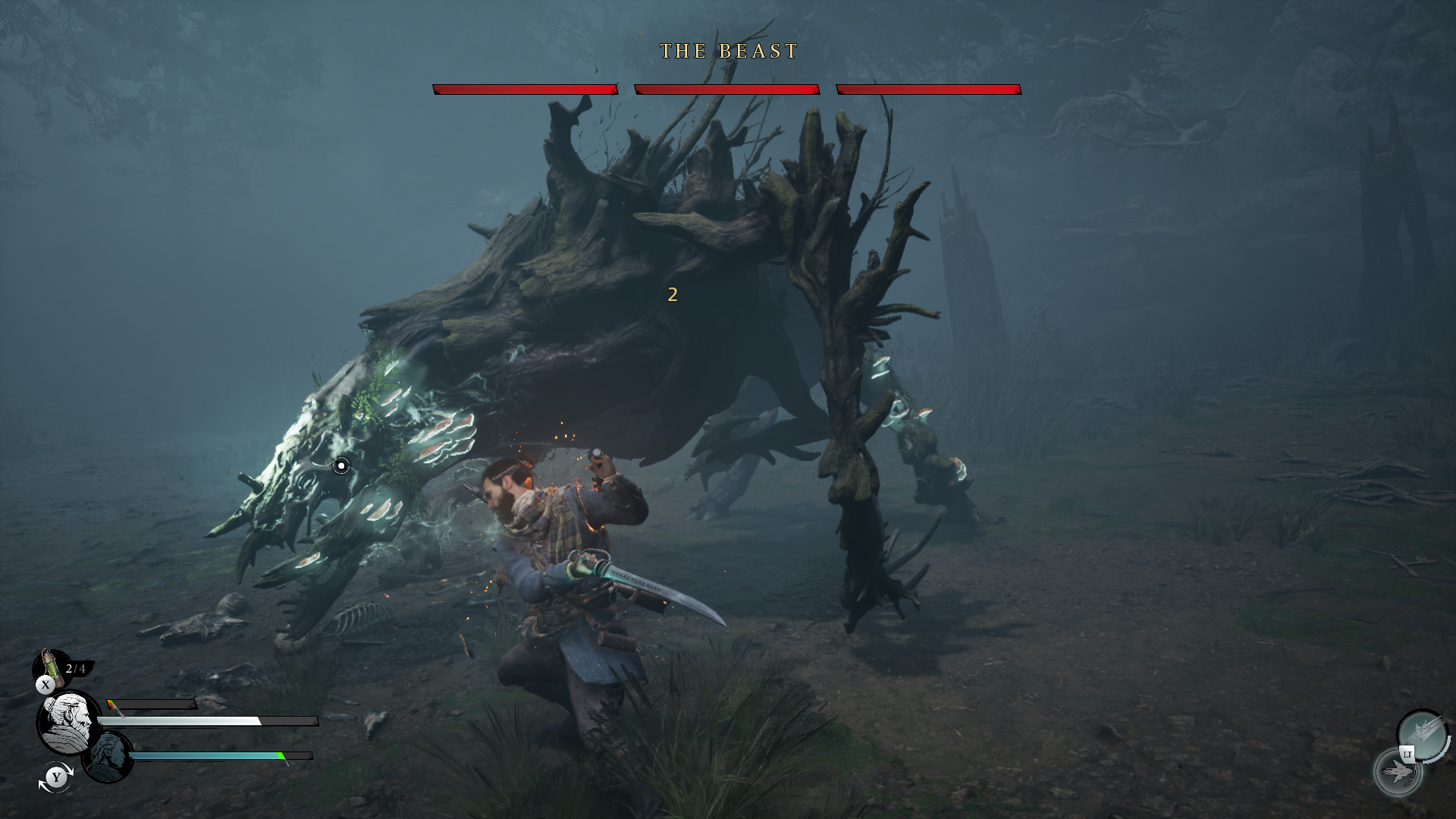
It’s all a bit Dark Souls, but locked into subtle arenas as creatures emerge from the ether to interrupt your exploration. Using your sword and gun as Red, and your various spectral powers as Antea, you have to wallop spooky creatures that come in a variety of denominations, from lowly spectres to massive bosses made up of multiple unhappy spirits.
I appreciate the subtle differences between the protagonists, with Antea not having a health bar but a rechargeable spirit gauge that whittles down as she attacks, and Red relying on, essentially, Dark Souls’ Estus flasks. And hey, Banishers has bonfires too, which similarly recharge your healing items while respawning enemies – but as you can save at any time, and you just restart from your last save when you die, their implementation does feel a little muddled.
Ultimately combat is solid but not especially thrilling, soon falling into a comfortable rhythm of weakening enemies with Antea, before finishing them as Red, with not enough variation in your abilities or weapons to feel like you have much input over character development. I never came to hate the combat, but I would always groan when I discovered a large-ish space that would obviously house the next combat encounter, although they are usually brisk enough to not outstay their welcome.
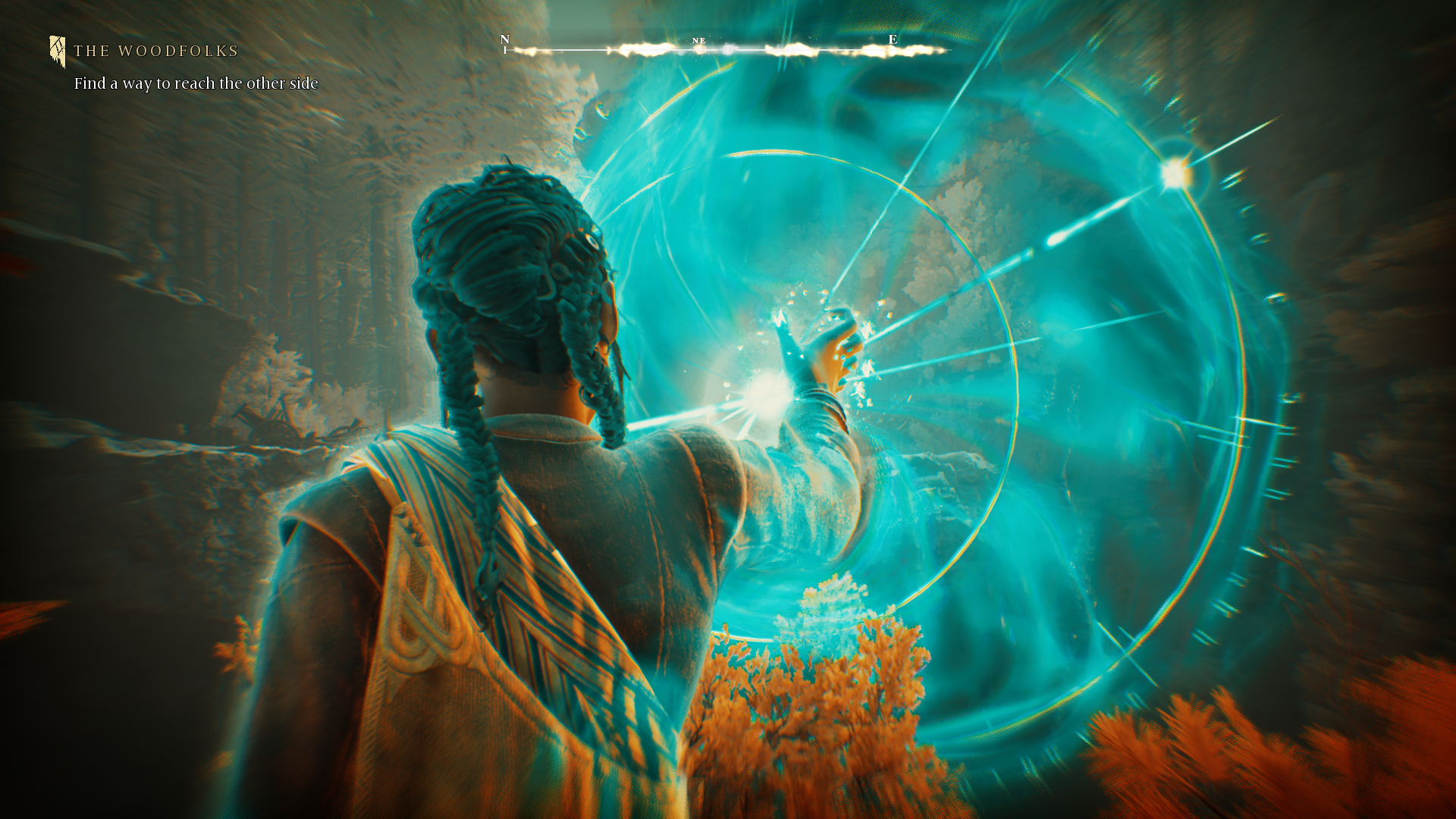
There is a lot of combat, just as there’s a lot of getting from A to B, in a story that sadly feels stretched thin. The ghost behind the curse is only really present in the prologue and climax of the game, while the rest has you slowly teasing out her backstory. Everyone here knows what happened, but I have to defeat this massive beast in the forest, and clear out this haunted mine, in exchange for mere narrative breadcrumbs? I feel that one proper interrogation – where we could put the obvious questions to the major players – would trim the game by a good ten hours or so.
But while there’s tension between a more personal story and the expectations of scale that come with an RPG, I’m still glad I docked in New Eden Town. It’s an evocative place, rich in atmosphere, history and horrible deeds, and it feels rewarding to drag its injustices into the light.




!["[T]he First and Fifth Amendments Require ICE to Provide Information About the Whereabouts of a Detained Person"](https://images.inkl.com/s3/publisher/cover/212/reason-cover.png?w=600)


